حدادة الألومنيوم هي طريقة تشكيل قطع صلبة من قضبان الألومنيوم تحت ضغط الضغط العالي، وعادةً ما يتم ذلك في وجود حرارة شديدة. وبالمقارنة مع عملية الصب، حيث يتم صب المعدن المنصهر في قوالب لصنع الأجسام المطلوبة، فإنه في عملية التشكيل لا يوجد ذوبان للمعدن؛ حيث يتم عمل المعدن في حالة صلبة، وهذا أحد الأسباب التي تجعل المادة تحتفظ بقوة وصلابة جيدة جدًا وتتحمل التعب بشكل أفضل. وهذا ما يجعل هناك فرقًا رائعًا في قدرة تحمل الأحمال لأجزاء الألومنيوم المطروقة وثباتها على المدى الطويل.
يُعد الألومنيوم أحد أهم المواد المستخدمة في الهندسة والتصنيع في العالم الحديث. إن قوة هذه السبيكة ومقاومتها للتآكل تجعلها مادة لا يمكن الاستغناء عنها في التطبيقات الصناعية مثل الفضاء والسيارات والبناء والشحن والدفاع. ومع ذلك، يمكن أن يتأثر أداء الألومنيوم بشكل كبير بوسائل معالجته. يعد تشكيل الألومنيوم أحد أكثر الوسائل فعالية لصنع مكونات قوية ومتينة أثبتت موثوقيتها في مختلف عمليات الإنتاج.
سيلقي هذا المقال نظرة متعمقة على هذا المفهوم، ويناقش العملية والمزايا والاستخدامات في هذه العملية المذهلة لتشغيل المعادن.
فهم التزوير
لتقدير عملية تشكيل الألومنيوم، يحتاج المرء إلى تكوين مفهوم موجز للمفهوم الأوسع، وهو التشكيل. الحدادة هي طريقة تصنيع قديمة. فقد اعتاد الحدادون على دق الحديد الساخن الأحمر في أجزاء الأدوات والأسلحة التي لم تكن تتمتع بقوة كبيرة فحسب، بل كانت متينة للغاية أيضًا. وينطبق المفهوم نفسه في الوقت الحاضر، على الرغم من أن التكنولوجيا الآن أكثر تطوراً بكثير.
عملية التشكيل هي عملية تشويه قطعة من المعدن تحت ضغط شديد، وعادةً ما يتم ذلك بمساعدة مكابس أو مطارق أو قوالب. ويعيد هذا الضغط إعادة توزيع بنية الحبيبات الداخلية للمعدن، مما يخلق أجزاء ذات خواص ميكانيكية أفضل من القطع المصبوبة أو المشغولة آليًا. وتتيح هذه العملية عند تطبيقها على الألومنيوم فرصة متميزة ذات مزايا خاصة مفيدة للعديد من الصناعات.
ما هو تزوير الألومنيوم؟
يمكن تعريف حدادة الألومنيوم ببساطة على أنها العملية القهرية لتشكيل سبائك الألومنيوم باستخدام التشوه الانضغاطي من أجل إنتاج أجزاء ذات قوة ومتانة وموثوقية أكبر مقارنةً بالأجزاء المنتجة من خلال ممارسات أخرى مثل الصب. لا ينصهر المعدن عادةً على الإطلاق، ولكن يتم تسخينه فقط بحيث يبقى في حالة صلبة أثناء العملية.
وتنتج هذه العملية ميزة كثيفة دقيقة الحبيبات تزيد من الخصائص الميكانيكية مثل قوة الشد والتعب والصلابة في الصدمات. إن التفكير في دق الألمنيوم وضغطه لإنشاء جزء يمكنه التعامل مع مختلف الظروف القاسية يعيد إلى الأذهان مصطلح "تشكيل الألمنيوم". وقد ساهم ذلك في أن يكون الألمنيوم المطروق هو المفضل في الصناعات التي لا يمكن فيها المساومة على مستويات السلامة والأداء.
عملية تشكيل الألومنيوم
تحتوي عملية تشكيل الألومنيوم على العديد من العمليات الدقيقة التي يتم من خلالها تصنيف المنتج على أنه عالي الجودة. وفيما يلي كيفية حدوث ذلك عادةً:
- إعداد البليت: يتم تقطيع سبائك الألومنيوم الخام، التي عادةً ما تكون على شكل قضبان أو سبائك، إلى الحجم المطلوب.
- التدفئة: يتم تسخين البليت إلى درجة حرارة عالية معينة، تتراوح عادةً بين 400 درجة مئوية و480 درجة مئوية. ويزيد هذا التسخين من قابلية المعدن للطرق ويجنب انصهاره.
- التزوير: في هذه العملية، يتم كبس البليت الساخن إما تحت مكبس ميكانيكي أو هيدروليكي في شكل القالب. وعندها يتم إعادة ترتيب بنية الحبيبات الداخلية للألومنيوم وبالتالي تزداد قوته.
- التشذيب والتشطيب: تتم إزالة وميض المواد. يتم بعد ذلك تشكيل القطعة المطروقة آليًا وفقًا لأبعاد دقيقة وتفاوت دقيق.
- المعالجة الحرارية (اختياري): تخضع بعض أجزاء الألومنيوم المطروقة لمعالجة حرارية إضافية لجعلها قوية وصلبة ومقاومة للتآكل قدر الإمكان.
يتم فحص كل مرحلة من مراحل عملية تشكيل الألومنيوم بعناية لتوفير جودة متساوية. يمكن أن يتداخل أي تغيير في درجة الحرارة أو الضغط أو الوقت مع الأداء النهائي للجزء.
مزايا الألومنيوم المطروق
ستتم مناقشة أسباب تفضيل الألومنيوم المطروق على غيره من المواد الهندسية الأخرى بعدة طرق. وتتمثل الإيجابيات فيما يلي:
- قوة فائقة: نظراً للهيكل دقيق الحبيبات فإن الألومنيوم المطروق يتمتع بقوة أكبر من الأجزاء المصبوبة أو المبثوقة.
- خفيف الوزن: يعتبر الألومنيوم مادة خفيفة الوزن بالفعل، ويعيد تشكيل الألومنيوم تشكيل هيكله لإزالة الوزن الزائد. وهذا ما يجعل الأجزاء المطروقة مناسبة للهندسة الحساسة للوزن، مثل هندسة الطيران وهندسة السيارات.
- متانة محسّنة: أجزاء الألومنيوم أكثر صلابة وقدرة على مقاومة عواقب الصدمات من الأسطح المختلفة والإجهاد والتعب مقارنةً ببدائلها.
- مقاومة التآكل: يتميّز الألومنيوم بمقاومة كبيرة للتآكل، ولكن عند التشكيل، يتم تحسين هذه الخاصية مما يجعل المكونات مفيدة في الظروف القاسية.
- المرونة في التصميم: يمكن تصميم الألومنيوم في أي شكل معقّد دون أي فقدان لسلامته، نظرًا للتقنيات الحالية المتاحة في التشكيل الحديث.
ليس من المستغرب أن تكون الصناعة الأكثر طلباً على الألومنيوم المطروق هي الصناعة التي يُستخدم فيها الألومنيوم المطروق، حيث أصبحت هذه المادة معروفة بأنها المعيار الذهبي للسلامة والمتانة.
المعالجات السطحية والفحص
نادرًا ما تستخدم قطع الألومنيوم المطروقة بعد الاستخدام مباشرة. تخضع المكونات المطروقة للتشطيب السطحي والفحص من أجل تلبية معايير الصناعة. تزيد هذه الإجراءات من المتانة والأناقة والاعتمادية.
تشطيب السطح
يعمل التشطيب على السطح على تحسين المظهر الجمالي والوظيفي لأجزاء الألومنيوم المطروقة. كما أنه يساعد في إزالة العيوب التي تظهر أثناء التشكيل. الطرق النموذجية هي:
- التصنيع الآلي: تزيل هذه العملية المواد غير المرغوب فيها وتضمن أن تكون جميع الأبعاد المطلوبة بالحجم المناسب.
- السفع بالخردق / السفع بالرمل: يزيل السطح ويعزز ملمسه.
- التلميع: يوفر لمسة نهائية ناعمة وعاكسة، وهي إما تجميلية أو عملية.
- الطلاء بأكسيد الألمنيوم أو الطلاء: يوفر طلاء يمنع التآكل والتآكل.
واعتمادًا على الغرض (الأغراض) المقصودة، يتم اختيار كل تشطيب على حدة: في حالة المكونات الفضائية، قد يتم طلاؤها بأكسيد الألومنيوم، بينما قد يتم تشكيل مكونات السيارات وصقلها آليًا.
الفحص
يتم استخدام الفحص بحيث يتوافق كل منتج من منتجات الألومنيوم المطروق مع معايير الجودة العالية. تشمل التقنيات ما يلي:
- الفحص البصري: يحدد ذلك الشقوق السطحية أو المخالفات.
- فحوصات المطابقة: تحقق من الدقة باستخدام أدوات مثل الفكّاسات وماكينات CMM.
- الاختبارات غير المدمرة (NDT): يتم استخدام الفحص غير المتلف، مثل الفحص بالموجات فوق الصوتية واختبار الصبغة المخترقة والفحص بالأشعة السينية للتحقق من الجودة الداخلية دون تدمير الجزء.
- الاختبار الميكانيكي: اختبار الصلابة وقوة الشد ومقاومة الصدمات.
الأهمية
هناك حاجة إلى التشطيب والفحص المناسبين حتى لا تتسبب عمليات تشكيل الألومنيوم في حدوث عيوب، مما يجعل الجزء ضعيفًا. وتعتبر هذه العمليات بالغة الأهمية في صناعات مثل صناعات الطيران والسيارات والصناعات البحرية حيث لا يمكن السماح بحدوث أي فشل.
المعالجة الحرارية لتزوير الألومنيوم
من العمليات المهمة للغاية في عملية تشكيل الألومنيوم المعالجة الحرارية. فهي تساعد في جعلها أكثر قوة وصلابة وليونة ومقاومة للتآكل. وفي غياب هذه المرحلة، لن تحقق جميع أجزاء الألومنيوم المحمّصة خصيصاً للدراجة أداءها الكامل.
التلدين
يتم تلدين الأجزاء المطروقة من الألومنيوم لجعلها لطيفة. يتم تسخين المعدن إلى درجات حرارة تتراوح بين 300-4000 درجة مئوية تقريبًا وتبريده بمعدل بطيء. وتقلل هذه الخطوة من الإجهاد الداخلي وتعزز الليونة، وبالتالي يكون الجزء أسهل في التشغيل الآلي ولا يحتاج إلى معالجات إضافية.
المعالجة الحرارية بالمحلول
في هذا التدريج، يتم تسخين القطعة المطروقة إلى درجة حرارة مرتفعة نسبيًا، في حالة السبائك، عادةً ما تكون 500-540 درجة مئوية. يتم إذابة العناصر المخلوطة بالسبائك، مثل النحاس أو المغنيسيوم، في محلول صلب. وهذا يسمح للقطعة بأن تبرد بسرعة ومن ثم تتصلب بسرعة.
التبريد
يتم إخماد الجزء المطروق مباشرةً بعد المعالجة الحرارية بالمحلول. عن طريق التبريد السريع في الماء أو الزيت أو محلول البوليمر، يتم تثبيت العناصر المذابة في موضعها. وهذا يشكّل بنية متجانسة لقطعة الألومنيوم المطروقة، والتي تكون جاهزة للخضوع للتقادم.
تصلب الترسيب
تزداد الصلابة والقوة مع التقدم في العمر. وهناك نوعان منتشران:
- الشيخوخة الطبيعية (T4): في درجة الحرارة المحيطة، هناك تعزيز لقوة الجزء على مدى فترة من الزمن.
- الشيخوخة الاصطناعية (T6): يُعاد تسخين القطعة إلى درجة حرارة منخفضة (120-190 0 درجة مئوية) وتُحفظ في درجة الحرارة هذه بمرور الوقت لتسريع التصلب.
تخفيف التوتر
قد تُترك الأجزاء الكبيرة أو المعقدة مع وجود إجهادات في التشكيل والتشكيل الآلي. تخفف هذه العملية من الإجهاد حول النقطة أقل قليلاً من درجات حرارة التلدين، ولكنها تبرد الجزء ببطء. وهذا يقلل من التشويه والتشقق عند الاستخدام.
الاختلافات المختلفة بين طرق تشكيل المعادن وطرق تشكيل المعادن الأخرى
على الرغم من أن عملية تشكيل الألومنيوم هي واحدة من أقوى الممارسات عندما يتعلق الأمر بالتصنيع، إلا أنها ليست التقنية الوحيدة. فالعمليات الشائعة الأخرى هي الصب والبثق والتشغيل الآلي. وللحدادة نصيبها من الفوائد، وفي بعض النواحي، من الصعب العثور على أكثر من ذلك:
1. التشكيل والصب
- عملية الصب هي صب الألومنيوم المذاب في قالب.
- وبدلاً من ذلك يقوم التشكيل بتشويه المعدن عندما يكون صلباً (ولكن غالباً ما يكون ساخناً).
والفرق الرئيسي بين الاثنين هو أنه يمكن استخدام الصب لإنشاء تصميمات أكثر تعقيدًا، في حين أن الأجزاء المطروقة أكثر موثوقية وثباتًا وخالية من المسامية (وجود ثقوب هواء صغيرة).
2. التشكيل مقابل البثق
- البثق يُجبر الألومنيوم على تمرير الألومنيوم من خلال قالب يقوم بتشكيل المنتج إلى قطع طويلة بنفس المقاطع العرضية (مثل القضبان والأنابيب والقنوات).
- التشكيل هو عملية ضغط الألومنيوم إلى قطع غاشمة بمساعدة القوة والقالب.
الفرق الأساسي: يعمل البثق مع التشكيلات الجانبية الطويلة والمتطلبات المتناسقة، وينتج التشكيل تفاصيل أقوى وأكثر تحملاً وأفضل تدفقاً للحبيبات.
3. التشكيل مقابل التشكيل. التصنيع الآلي
- تزيل الماكينات المواد من كتلة ألومنيوم صلبة باستخدام المخارط أو المطاحن أو أي أداة أخرى.
- يعمل التشكيل على تشويه المعدن بدلاً من إزالة المعدن.
الفرق الرئيسي: يتمثل الفرق الرئيسي بين التصنيع الآلي والحدادة في أن التصنيع الآلي ينتج أجزاء بدون نفايات، ولكنه أقل كفاءة من حيث استخدام المواد، بينما في الحدادة يتم استخدام مواد أقل لإنتاج أجزاء أقوى.
4. التشكيل مقابل الختم. الختم
- الختم هو إجراء يتم فيه استخدام مكبس لقطع أو ختم قطع من صفائح الألومنيوم.
- تستخدم عملية التشكيل الضغط الانضغاطي على القضبان لإنشاء مكوّن أقوى وأسمك.
الفرق الرئيسي: يُستخدم الختم في مكونات الصفائح المعدنية الرقيقة، ويُستخدم التشكيل في الأجزاء الهيكلية والحاملة للأحمال.
باختصار:
- اختيار الممثلين أفضل في شكل معقد، وإن كان أضعف.
- البثق: هذا البثق مناسب في حالة المقاطع الطويلة ويفتقر إلى القوة.
- دقيق: دقيق، ولكنه غير اقتصادي في التصنيع الآلي.
- الختم: رخيصة وسريعة، ولكن على الأجزاء الرقيقة فقط.
- التزوير: أفضل عملية من حيث المتانة وقوة التعب والتطبيقات الحرجة للسلامة.
استخدامات تشكيل الألومنيوم
تتعدد مجالات استخدامات تشكيل الألومنيوم وتتعدد المشاريع التجارية الضخمة التي تتطلب أداءً وموثوقية. ومن بين أبرز التطبيقات، يمكن مناقشة التطبيقات التالية:
- معدات السيارات: يُستخدم الألمنيوم المطروق في مكونات التعليق والعجلات وأعضاء الهيكل وأعضاء المحرك. وتتعرض هذه الأجزاء لأحمال كبيرة، ولكن يجب أن تكون قادرة أيضاً على الحفاظ على وزن السيارة وتوفير الوقود.
- صناعة الطيران والفضاء في الطائرات، يُعد تشكيل الألومنيوم في الطائرات مكونًا أساسيًا في معدات الهبوط وهيكل الجناح وأجزاء المحرك. إن مجرد هوامش الأمان الضعيفة في صناعة الطيران تجعل الأجزاء المطروقة ضرورية.
- الإنشاءات والبنية التحتية: يتم الاعتماد على وصلات ووصلات الألومنيوم المطروقة في الجسور والمباني الشاهقة لأنها تدوم طويلاً.
- التطبيقات البحرية: لا يصدأ الألومنيوم بسهولة، مما يجعله المفضل عندما يتعلق الأمر بالبناء المسموح به في البيئة البحرية: السفن، والمراوح، والمنشآت البحرية.
- الآلات الصناعية: قد تستخدم المعدات ذات السعة العالية أجزاء مطروقة، إما من الألومنيوم أو من مواد أخرى، حيث تتطلب مواصفاتها القوة والوزن المنخفض.
إن مرونة المكونات المطروقة تجعل ما يسمى بالحدادة المصنوعة من الألومنيوم في الهندسة المعاصرة أكثر ملاءمة.
مقارنة بطرق التصنيع الأخرى
ما هو الفرق بين مطروقات الألومنيوم والمطروقات المصنوعة من الألومنيوم والصب أو البثق أو التشغيل الآلي؟
- اختيار الممثلين يسمح بأشكال ذات طبيعة معقدة، ولكنه يميل إلى وجود مسامية وبنية حبيبية ضعيفة. تتم إزالة نقاط الضعف هذه من خلال استخدام الألومنيوم المطروق
- البثق: يتميز الألومنيوم المبثوق من الألومنيوم بتناسق أبعاد مفيد، ولكنه يفتقر إلى الخصائص الميكانيكية للقطع المصبوبة.
- التصنيع الآلي والتشكيل: يعمل التصنيع الآلي بشكل جيد فقط على الكتل الصلبة، وهذا دقيق ولكنه مهدر وأقل اقتصاديًا من التشكيل.
ولهذا السبب تميل تلك الصناعات التي تتمتع بميزة التركيز على القوة والسلامة إلى اختيار عملية تشكيل الألومنيوم.
أنواع تزوير الألومنيوم
اعتمادا على الطرق والمعدات، يمكن تصنيف تشكيل الألومنيوم إلى أكثر من عدة أنواع. وتحدد نقاط القوة وحجم إنتاج الأجزاء ذات الصلة الطريقة التي يجب استخدامها، كما أن المزايا التي توفرها كل طريقة فردية.
1. التشكيل بالقالب المفتوح
وفي إطار عملية التشكيل بالقالب المفتوح، يتم وضع قالب الألومنيوم بين قوالب مسطحة أو بسيطة الشكل، والتي تفشل في إحاطة قالب الألومنيوم. وبعد الطرق المتكرر أو الضغط المتكرر للمعدن، يتم الحصول على الشكل المطلوب. وهي عملية مثالية في حالات الأجزاء الكبيرة مثل الأعمدة والحلقات والأقراص بسبب الحاجة إلى قوة عالية. لا يتسنى التشكيل بالقالب المفتوح إلا من خلال المرونة في التصميم، على الرغم من أن الأمر يتطلب إجراء عمليات تصنيع إضافية حتى الوصول إلى الشكل النهائي.
2. التشكيل بالقالب المغلق (التشكيل بالقالب الانطباعي)
في عملية التشكيل بالقالب المغلق، يقوم القالب بتغليف القالب المسخّن. وعند ممارسة الضغط، يتدفق الألومنيوم في تجويف القالب ويكتسب شكله الدقيق. وهي طريقة جيدة لصنع الأجزاء المعقدة ذات التفاوت الدقيق، مثل أجزاء تعليق السيارات أو تجهيزات الطائرات. وعلى الرغم من أن تكاليف الأدوات أكبر، إلا أن دقة وقوة الأجزاء المطروقة بالقالب المغلق تعتبر من المزايا الهامة لهذه العملية.
3. التشكيل على البارد
التشكيل على البارد عند درجة حرارة الغرفة أو بالقرب منها، بينما في عملية التشكيل التقليدية، يتم تسخين المعدن قبل إجراء عملية التشكيل. كما أنها تحتاج أيضًا إلى ضغط أعلى، ولكن النتائج التي يتم الحصول عليها هي مواد ذات تشطيب سطحي عالٍ ودقة عالية في الأبعاد. وغالبًا ما يتم تشكيل الأجزاء الأصغر حجمًا من الألومنيوم، مثل المثبتات والتروس والأجهزة، على البارد حيث تكون القوة والدقة ذات أهمية.
4. التشكيل على الساخن
يُطلق على أكثر أنواع مطروقات الألومنيوم شيوعًا اسم التشكيل على الساخن. يتم تسخين البليت إلى درجة حرارة معينة (لا تزال أقل من درجة انصهاره) بحيث يتم تحسين الليونة. وهذا يقلل من مقدار القوة اللازمة لتشكيل الألومنيوم ويعزز البنية الحبيبية. يتم تطبيق التشكيل على الساخن في الغالب كإحدى الطرق في إنتاج الأجزاء الأكبر حجماً والتي تكون أكثر تعقيداً وتتطلب خصائص مادية أفضل.
5. التشكيل الدقيق
التشكيل الدقيق هو نوع من أنواع التشكيل بالقالب المغلق المصمم خصيصًا ليتطلب أقل قدر ممكن من المعالجة الثانوية (أو لا يتطلب أي معالجة ثانوية). يتم تضمين مستويات عالية من الدقة في القوالب التي تسمح بإنتاج أجزاء ذات شكل صافي تقريبًا. وهذا يقلل من الهدر ويوفر التكلفة ويوفر جودة ثابتة، مما يجعلها مفضلة في صناعة الطيران وصناعة الأداء العالي.
6. التشكيل بالدلفنة
في البكرة، تدور القوالب الأسطوانية أو المسطحة، ويتم ضغط قضبان الألومنيوم الساخنة. هذه المعالجة تجعل المادة أرق وأطول مع توحيد الحبيبات. وغالباً ما يتم تشكيل أجزاء مثل المحاور والأعمدة المدببة والحلقات عن طريق التشكيل بالدلفنة.
7. الدرفلة الحلقية غير الملحومة (التشكيل الحلقي)
خاتم الألومنيوم/تشكيل حلقات الألومنيوم هي عملية متخصصة لتصنيع حلقات غير ملحومة من الألومنيوم. يتم تمديد البليت المثقوب قليلاً في شكل حلقة ثم يتم لفه إلى القطر والسُمك المرغوب فيه. وهذه الطريقة مهمة في صناعة الطيران والتوربينات ومكونات المحامل.
8. تزوير متساوي الحرارة
في هذا الإجراء عالي التحكم، يتم تسخين قضبان الألومنيوم وقوالب التشكيل إلى درجة حرارة متساوية. وهذا يقلل من التدرجات الحرارية إلى أدنى حد ممكن، مما يتيح تحكماً أكثر دقة في الأشكال المعقدة. وغالبًا ما يمكن العثور على عملية التشكيل المتساوي الحرارة في صناعة الطيران والغرسات الطبية التي تتطلب الدقة.
9. تزوير شبه صافي الشكل
ولا تقتصر هذه العملية على كونها عملية حدادة متقدمة، بل تهدف العملية إلى إنتاج عناصر شبه نهائية الحجم وقد لا تحتاج إلى أي معالجة لاحقة. فهي أقل إهدارًا للمواد وتوفر المال، ولكنها لا تزال تحتفظ بالقوة التي تحصل عليها عند التشكيل.
10. تزوير مضطرب
يعمل الحدادة المقلوبة على تكبير قطر البليت عن طريق ضغط طوله. ويُستخدم على نطاق واسع في تصنيع أدوات التثبيت مثل البراغي والبراغي والصمامات حيث تكون قوة الرأس أو الساق مطلوبة.
المواد الخام المستخدمة في تشكيل الألومنيوم
يعتمد تشكيل الألومنيوم في المقام الأول على سبائك الألومنيوم وليس على الألومنيوم النقي. تتطلب معظم التطبيقات الإنشائية صفات أقوى في الألومنيوم، لذلك يتم إضافة عناصر أخرى مثل النحاس والزنك والمغنيسيوم والسيليكون لزيادة قوة وأداء المواد.
السلسلة 2xxx (سبائك الألومنيوم والنحاس)
- مثال على ذلك: 2219
- الخصائص: قوي للغاية ويسهل تشكيله آلياً ويتميز بأداء ممتاز في درجات الحرارة العالية.
- التطبيقات: تجهيزات الطيران وقطع غيار محركات السيارات ومعدات الدفاع.
السلسلة 5xxx (سبائك الألومنيوم والمغنيسيوم)
- مثال على ذلك: 5083
- الخصائص: مقاومة ممتازة للتآكل، خاصة في البيئة البحرية.
- التطبيقات: الهياكل البحرية، وبناء السفن، وسفن التجهيز وبناء السفن.
السلسلة 6xxx (سبائك الألومنيوم والمغنيسيوم والسيليكون)
- مثال على ذلك: 6061, 6082
- الخصائص: مزيج موحد جيد من القوة ومقاومة التآكل وقابلية التشغيل الآلي.
- التطبيقات: أجزاء تعليق السيارات، وأقواس الطيران وأجزاء البناء.
السلسلة 7xxx (سبائك الألومنيوم - الزنك)
- مثال على ذلك: 7075
- الخصائص: قوة عالية جداً، ومقاومة جيدة للإجهاد ومقاومة أسوأ للتآكل.
- التطبيقات: قطع غيار الطائرات، ومثبتات الطيران، والمعدات العسكرية، والسلع الرياضية عالية الأداء.
السبائك المتخصصة
تُستخدم بعض السبائك المصنعة خصيصًا في التشكيل المتساوي الحرارة والدقة وحيثما يكون التفاوت الصارم والأداء العالي في الظروف القاسية مطلوبًا.
- الاستخدامات: المركبات الفضائية والمحركات التوربينية والمعدات الطبية المنقذة للحياة.
للتلخيص:
- سبائك السلسلة الأكثر لحامًا هي 6061 و6082 نظرًا لتنوع الاستخدام.
- تُعد خلائط 7075 وغيرها من سبائك سلسلة 7xxx شائعة في مجال الطيران لأن القوة هي الاعتبار الرئيسي.
- تُستخدم سبائك السلسلة 5xxx عندما تكون القوة أقل أهمية مقارنةً بمقاومة التآكل (مثل التطبيقات البحرية).
- عند الحاجة إلى القوة في درجات الحرارة العالية، يتم استخدام سلسلة السبائك 2xxx.
المشاكل والقيود
على الرغم من أن عملية التشكيل لها العديد من المزايا، إلا أن هناك بعض القيود. فالقوالب والمكابس باهظة الثمن، حيث يتم امتصاص تكاليف الأدوات في عمليات الحدادة المنخفضة. كما لا يمكن للمرء تشكيل كل الأشكال. ويمكن أن تنطوي التصاميم الأكثر تعقيدًا على تشطيب آلي.
العامل المقيد الآخر هو أنه لا يمكن تشكيل جميع سبائك الألومنيوم. يجب اختيار السبيكة الأنسب، بدون المبالغة في التأكيد على أداء ميكانيكي واحد أو قابلية تصنيع المنتج. إلا أن هذه العيوب عادةً ما تطغى عليها المزايا التي لا مثيل لها للألومنيوم المطروق.
مستقبل صناعة الألومنيوم المطروق
يتمتع الألومنيوم المطروق بمستقبل لامع مدعوم بالابتكار والرغبة العالمية في الحصول على وزن خفيف وأداء عالٍ. ومع انتشار السيارات الكهربائية بشكل أكبر، وظهور المزيد من تقنيات الطيران، وإيجاد حلول تؤدي إلى تحسين الطاقة الخضراء، سيزداد الطلب على المواد القوية والخفيفة في الوقت نفسه.
تتبنى مصانع الحدادة المعاصرة أيضًا الأتمتة واستخدام أجهزة الكمبيوتر والنماذج وزيادة فحوصات الجودة من أجل الخروج بأجزاء متفوقة وأكثر إنتاجية. ومع الاستدامة، من المتوقع أن تزداد أولوية الاستدامة لأن استخدام الألومنيوم من خلال التشكيل سيصبح عنصرًا أكثر أهمية، لأنه ببساطة قابل لإعادة التدوير ومتوفر بكثرة.
لماذا تختار شركة GC Precision Mould كشركة مصنعة لقوالب الألومنيوم؟
هنا في GC Precision Mould، نقدم لك في GC Precision Mould أفضل أنواع حلول تشكيل الألومنيوم التي تناسب متطلبات صناعتك. لدينا الخبرة والمعدات المتطورة والمحترفين المهرة الذين يضمنون نتائج عمل عالية الجودة من حيث الدقة والمتانة والكفاءة. تشمل خدماتنا دعم مجموعة كاملة - مشروع تشكيل الألومنيوم واختيار المواد، وعملية التشكيل، والمعالجة الحرارية، والتشطيب السطحي، والفحص الدقيق. نحن نلبي احتياجات مختلف الصناعات من شركات الطيران والسيارات والفضاء والجو والبحرية والبناء والآلات الصناعية.
يظل تركيزنا على الابتكار والاتساق ورضا العملاء هو ما يجعلنا متميزين. عندما تختار GC Precision Mold، فأنت لا تقوم ببساطة بالاستعانة بمصادر خارجية لإنتاج قطع الألومنيوم المطروقة: فأنت تضع عملك في المستقبل وتوفر لعملائك الموثوقية وطول عمر المنتج.
الخاتمة
إلى أين يقودنا هذا؟ ما هو تشكيل الألومنيوم؟ عندما يتم إعادة تشكيل سبائك الألومنيوم بمستويات عالية من قوة الضغط، تُعرف عملية إعادة تشكيل سبائك الألومنيوم من أجل صنع أجزاء أقوى وأكثر موثوقية. إن الصناعات التي تستخدم الألومنيوم المطروق واسعة وواسعة وضرورية، على سبيل المثال لا الحصر صناعة السيارات، وصناعة الطيران، والبناء، وغيرها الكثير.
تتم معالجة القضبان الخام إلى أجزاء مصنعة بدقة عالية قادرة على تحمل مستويات أعلى من الإجهاد والتعب والتآكل في تشكيل الألومنيوم. وينتهي بها الأمر إلى مادة قوية وخفيفة الوزن، وهو أمر لا تستطيع معظم الصناعات الحديثة الاستغناء عنه.
تتطور التكنولوجيا وتصبح أكثر أهمية فيما يتعلق بالألومنيوم المطروق والألومنيوم المطروق، وستحتل مكانة رائدة في مجال الابتكارات الهندسية والتصنيعية.
الأسئلة الشائعة
س1 ما هي الصناعات التي تستخدم الألومنيوم المطروق بشكل أفضل؟
تدمج قطاعات مثل الطيران والسيارات والملاحة البحرية والبناء تشكيل الألومنيوم في تطبيقاتها من أجل الحصول على أجزاء قوية وخفيفة الوزن مع موثوقية استثنائية.
س2: ما هي السبائك التي يتم تشكيلها بواسطة GC Precision Mould؟
اعتمادًا على متطلبات استخدامك، يمكننا العمل مع أنواع سبائك الألومنيوم التالية: 2xxx، 5xxx، 6xxx، و7xxx.
س3: هل تقدمون حلولاً خاصة للتشكيل أو السبك باستخدام الألومنيوم؟
نعم. نحن متخصصون في الأجزاء المطروقة حسب الطلب لتناسب المواصفات ومتطلبات الصناعة.
س4: ما هي المقارنة بين الألومنيوم المطروق والألومنيوم المصبوب؟
يُستخدم الألومنيوم المطروق الأقوى والأكثر كثافة وتنوعًا وصلابة من الألومنيوم المصبوب للتعامل مع الأحمال الثقيلة والتطبيقات الحرجة.

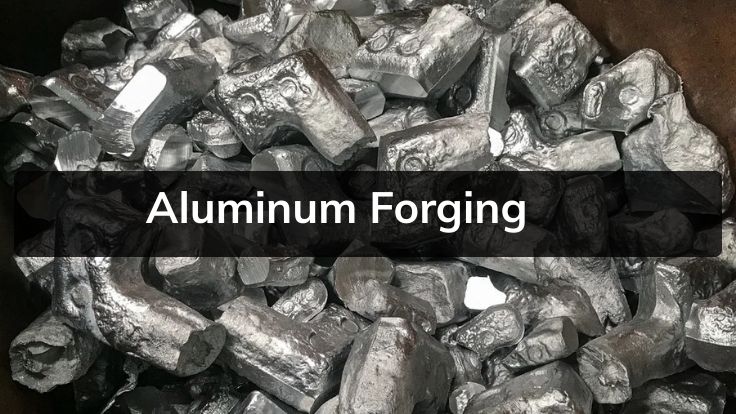
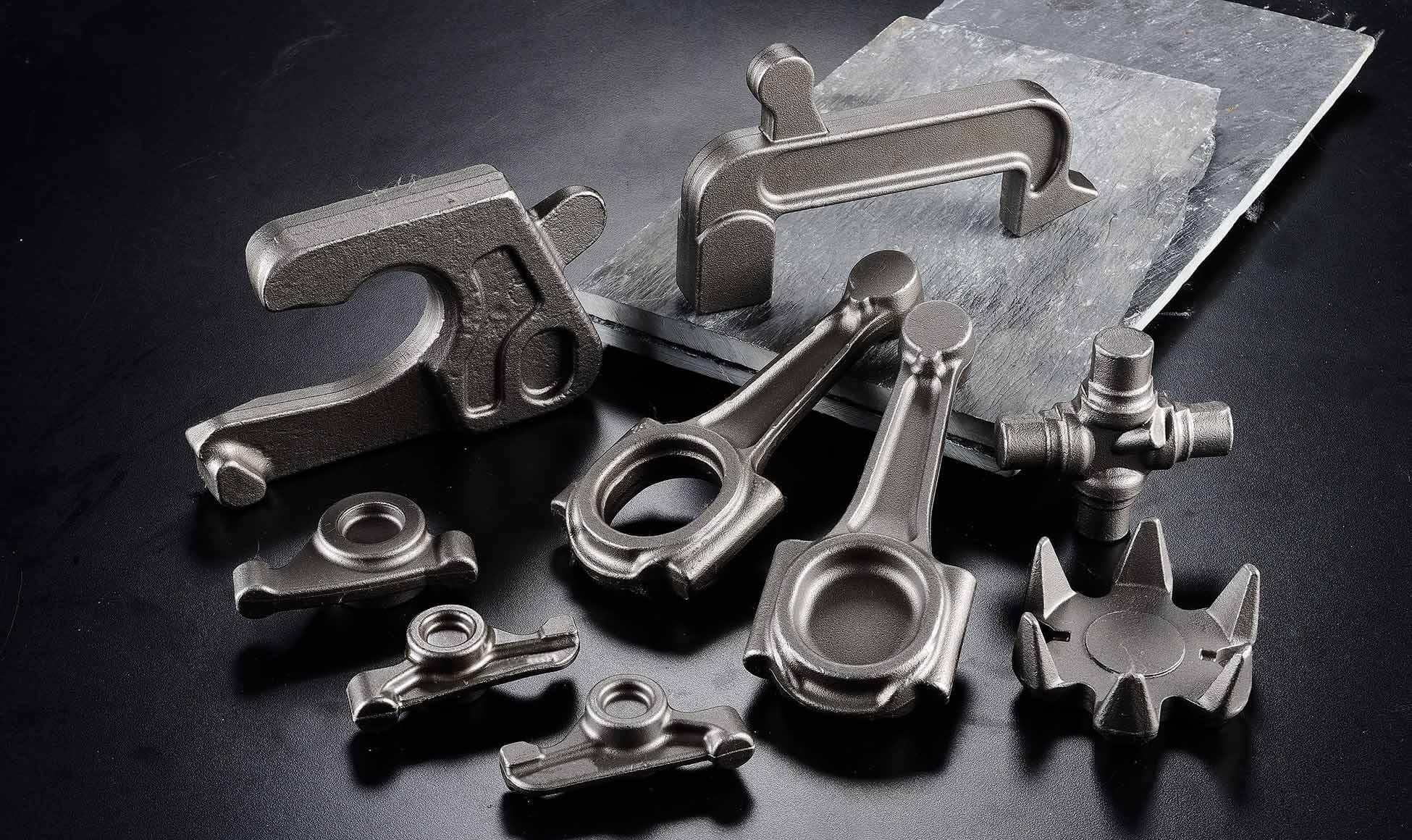
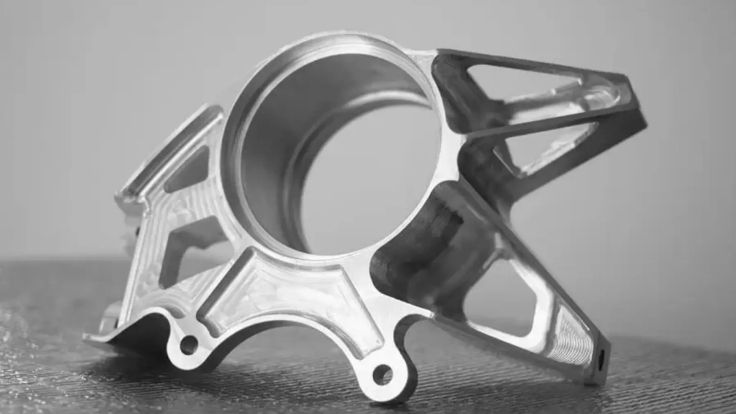

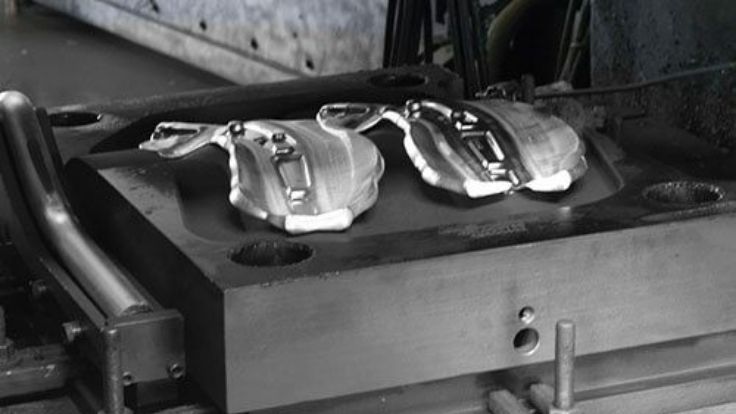


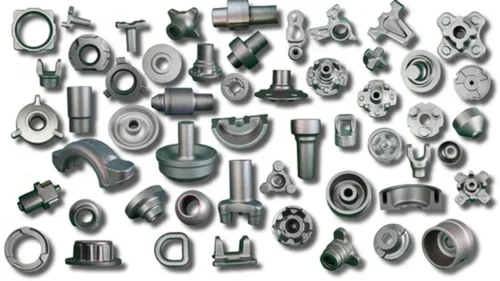
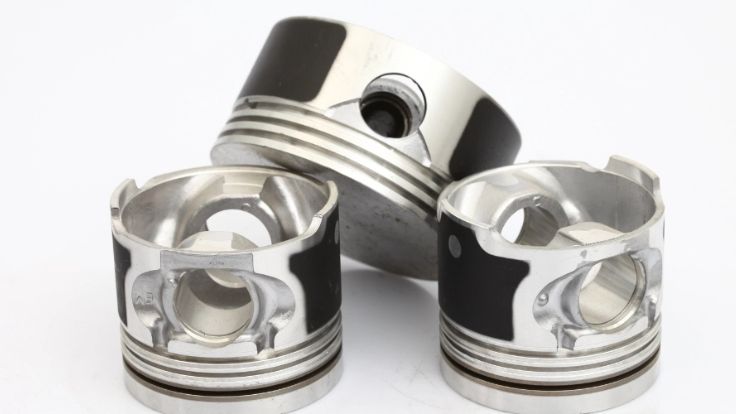
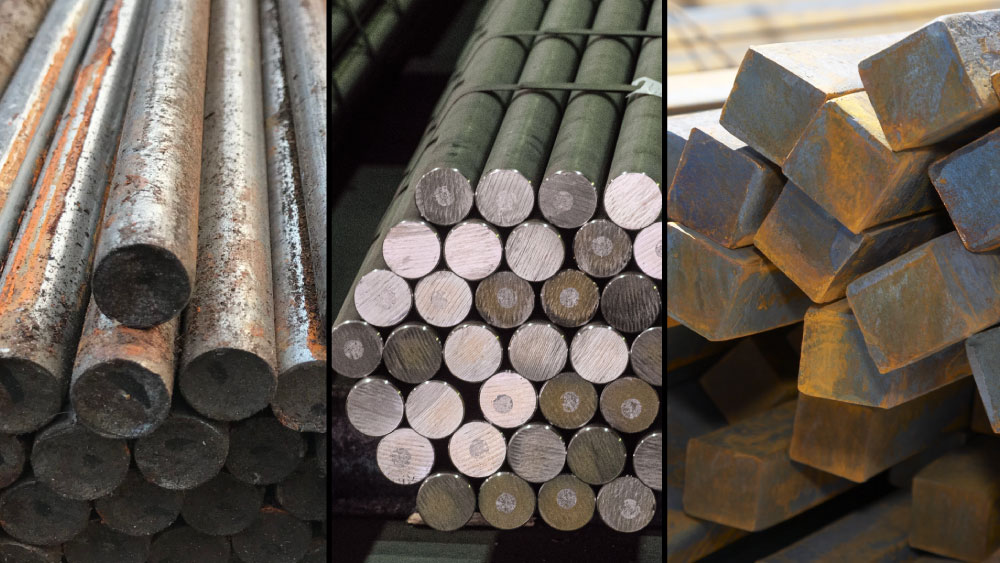
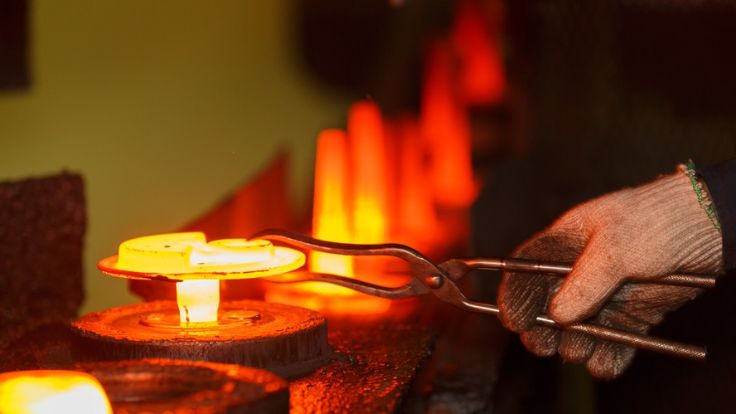
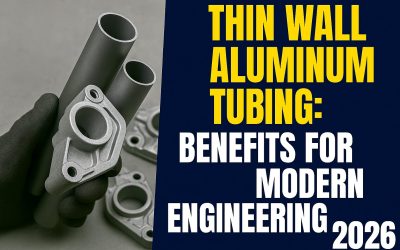
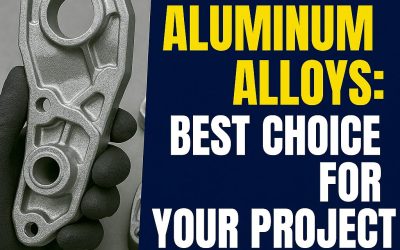
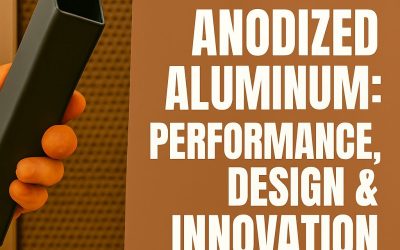
0 تعليق